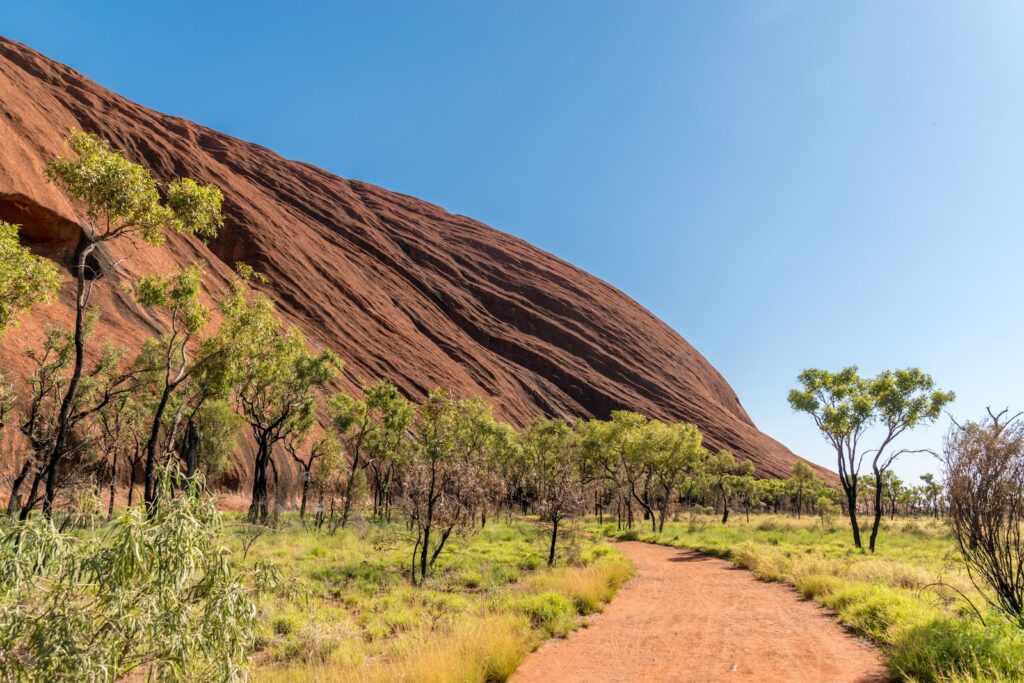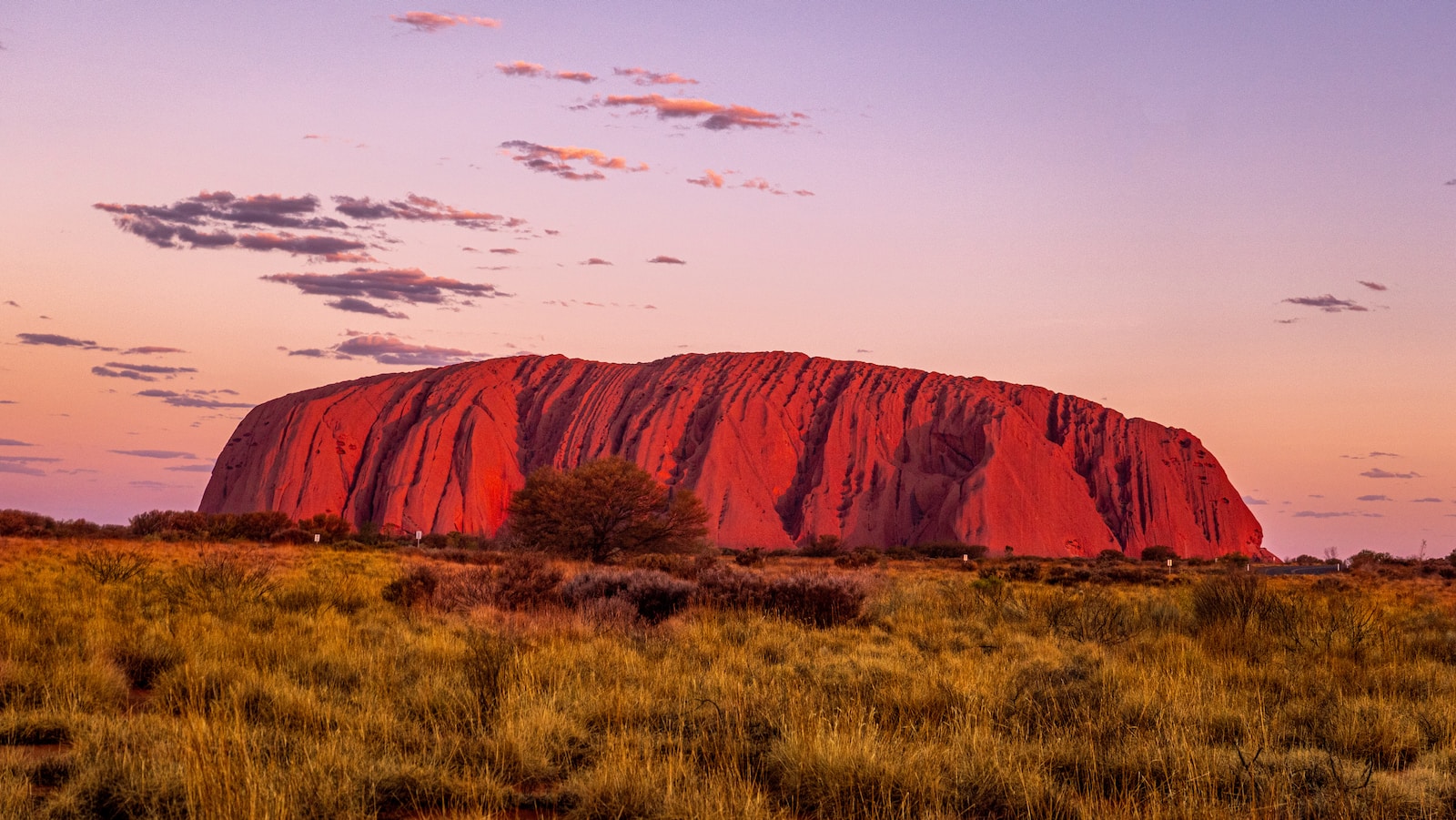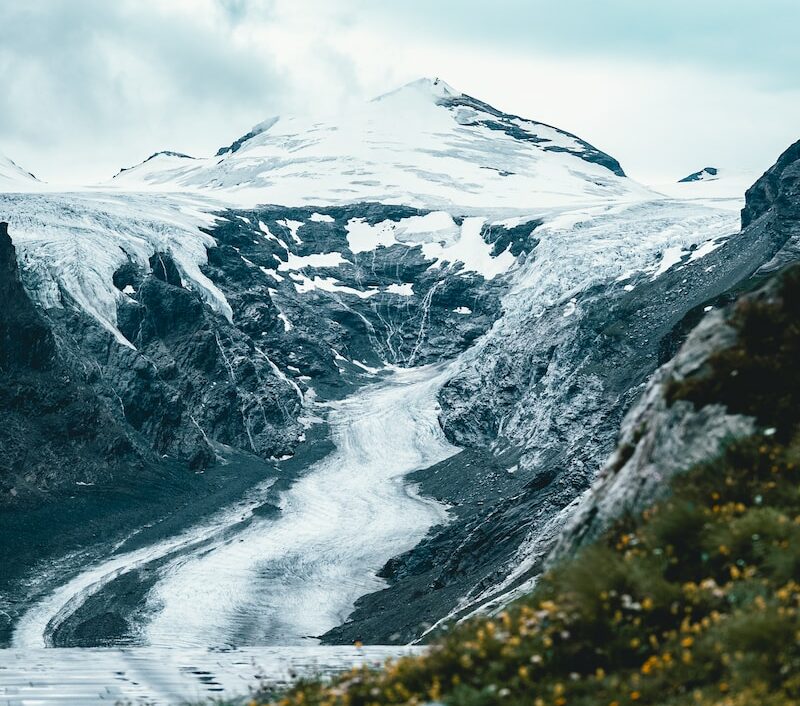Welcome to “Uluru: A Photo Expedition,” where you will embark on a captivating journey to Australia’s iconic Uluru (called Ayers Rock by European settlers). Discover the secrets of capturing the magnificent beauty of these unique rock formations through the lens of your camera. Join us as we explore the art of photography amidst the breathtaking landscapes of this natural wonder.
Table of Contents
- The Majestic Uluru
- Embark on Your Uluru Photography Journey
- Capturing the Magnificent Uluru
- Frequently Asked Questions
- 1. What is Uluru?
- 2. Where is Uluru located?
- 3. Can I visit Uluru?
- 4. How can I reach Uluru?
- 5. What camera equipment should I bring to capture Uluru?
- 6. Are there photography restrictions at Uluru?
- 7. What is the best time to photograph Uluru?
- 8. Can I hike around Uluru?
- 9. What other attractions are there near Uluru?
- 10. Is it necessary to book accommodation in advance?
- 11. Why was it called Ayers Rock?
- Wrap Up
The Majestic Uluru
Uluru, also known as Ayers Rock, is a massive sandstone rock formation located in the heart of Australia’s Northern Territory. It is situated within the Uluru-Kata Tjuta National Park, which is a UNESCO World Heritage Site. Uluru is one of Australia’s most iconic natural landmarks and holds great cultural and spiritual significance for the Indigenous Anangu people, who are the traditional custodians of the land.
The rock itself is notable for its unique appearance, changing colors throughout the day, with vibrant reds and oranges during sunrise and sunset. Uluru rises approximately 348 meters (1,142 feet) above the surrounding landscape and has a circumference of about 9.4 kilometers (5.8 miles).
Visitors to Uluru-Kata Tjuta National Park can explore the area, take guided tours, and appreciate the rich cultural heritage of the region. It’s important to note that climbing Uluru is considered disrespectful to the Indigenous beliefs and has been discouraged and ultimately prohibited since 2019.
Uluru and the surrounding national park offer a profound and meaningful experience for travelers, allowing them to connect with the natural beauty and cultural history of this remarkable part of Australia.
The Perfect Photography Destination
Ulurupresents a plethora of opportunities for photographers of all skill levels. Its unique colors, ever-changing textures, and dramatic silhouettes offer an enchanting canvas for capturing stunning images. Whether you prefer landscapes, close-ups, or abstract compositions, this natural wonder provides endless inspiration.
Photography Techniques to Enhance Your Shots
Mastering the art of photographing Uluru involves more than just pointing and shooting. By employing a range of techniques, you can elevate your images from good to extraordinary. Experiment with composition, lighting, depth of field, and perspective to create dynamic and visually striking photographs that truly encapsulate the essence of this mesmerizing site.
Capturing Sunrise and Sunset
Witnessing the sun rise and set over Uluru is an awe-inspiring experience that every photographer should have on their bucket list. The interplay of vibrant hues in the sky against the rock’s majestic presence creates a magical scene. Learn how to make the most of these golden hours, capturing the breathtaking beauty and serene atmosphere in your photographs.
Exploring the Surrounding Landscapes
While Uluru is undoubtedly the star of the show, the surrounding landscapes of the Red Centre offer a multitude of captivating subjects for your lens. From the towering Kata Tjuta (the Olgas) to the sweeping plains and rugged gorges, there is no shortage of natural wonders to explore and photograph in this extraordinary region.
Uluru is a UNESCO World Heritage site and is believed to have started forming around 550 million years ago.
Respecting Indigenous Culture
As you immerse yourself in the captivating landscapes and photographic opportunities that Uluru offers, it is vital to respect the cultural significance of this sacred site. Learn about the traditions, stories, and spiritual connection the Anangu people have with Uluru, and photograph with a deep appreciation for the land and its cultural heritage.
Essential Gear and Tips
Prepare for your photo expedition by ensuring you have the right gear to capture stunning images. From camera equipment and lenses to accessories such as tripods and filters, we will guide you on what to pack for your photography adventure. Additionally, we’ll provide you with valuable tips and techniques to make the most of your time at Uluru.
Embark on Your Uluru Photography Journey
Prepare to be amazed as you embark on a photography expedition to Uluru. Immerse yourself in the breathtaking landscapes, capture the captivating rock formations, and create memorable photographs that showcase the natural wonders of this UNESCO World Heritage site. Join us on this incredible adventure where photography and nature converge into a truly unique visual experience.
Capturing the Magnificent Uluru
There I was, standing in front of Australia’s iconic Uluru. The massive rock formation was a sight to behold, its crimson hues glowing in the warm desert sunlight. As a passionate photographer, this was a dream come true. I couldn’t wait to capture the beauty of this natural wonder on my camera.
However, I soon realized that photographing such a monumental landmark required more than just pointing and shooting. The vastness and complexity of Uluru demanded a thoughtful approach and understanding of the art of photography.
But first, let me introduce myself. My name is Sarah, and I have been an avid photographer for over a decade. I’ve traveled to various locations worldwide to capture the beauty of different landscapes, but the challenge posed by Uluru was unlike any other.
Overcoming Challenges
One of the biggest challenges I faced was the ever-changing light conditions. The shifting positions of the sun created dramatic shadows and highlights on the rock’s surface, making it essential to choose the right time of day for optimal lighting.
To tackle this challenge, I decided to explore Uluru at both sunrise and sunset. These golden hours provided a magical glow to the rock, accentuating its textures and colors, resulting in mesmerizing photographs.
Another obstacle was the sheer scale of Uluru. At 348 meters high and 9.4 kilometers in circumference, capturing its grandeur in a single frame was nearly impossible. To overcome this, I opted for panorama shots, stitching together multiple images to create a comprehensive view. The final result was breathtaking, showcasing the rock’s magnificence in all its glory.
The Benefits of Photographing Uluru
Aside from the technical challenges, photographing Uluru provided me with a profound sense of connection to the land and its cultural significance. The rock holds great significance to the Indigenous people of Australia, and I wanted to capture its spiritual essence in my photographs.
During my journey, I had the opportunity to meet and learn from Indigenous guides who shared their knowledge and stories about the rock, enriching my photographic experience. This connection with the land and its people allowed me to capture not just the physical beauty of Uluru but also the emotional and cultural depth that it represents.
Uluru is a photography paradise, offering endless possibilities to sharpen your skills and create stunning visuals. From close-up shots revealing intricate textures to wide-angle captures showcasing the surrounding desert expanse, every photographer can find their unique perspective here.
If capturing nature’s grandeur and immersing yourself in the ancient spirit of Uluru is something that entices you, then join me on a photo expedition to Australia’s most iconic landmark. Let’s unlock the magic of this majestic rock formation and unleash the power of photography.

Frequently Asked Questions
1. What is Uluru?
Uluru is a large sandstone rock formation in central Australia. It is considered one of Australia’s most iconic landmarks and holds deep cultural and spiritual significance for the local Indigenous people.
2. Where is Uluru located?
Uluru is located in Uluru-Kata Tjuta National Park, in the Northern Territory of Australia. It is situated approximately 335 kilometers southwest of Alice Springs.
3. Can I visit Uluru?
Yes, Uluru is open to visitors. However, please note that it is essential to respect the cultural significance of the site and adhere to the guidelines set by the traditional owners, the Anangu people.
4. How can I reach Uluru?
You can reach Uluru by air or by road. Ayers Rock Airport is the closest airport with regular flights from major Australian cities. Alternatively, you can drive to Uluru from Alice Springs, which takes around 4.5 hours.
5. What camera equipment should I bring to capture Uluru?
To capture the magnificent rock formations of Uluru, it is recommended to bring a digital camera with a wide-angle lens, a tripod for stability, and filters to enhance the colors and details in your photographs.
6. Are there photography restrictions at Uluru?
Yes, there are certain photography restrictions in place to respect the cultural sensitivities of the local Indigenous people. Commercial photography, including the use of drones, requires a permit. Additionally, there are specific areas where photography is not allowed, so make sure to follow the designated guidelines.
7. What is the best time to photograph Uluru?
The best time to photograph Uluru is during sunrise or sunset when the rock formations are bathed in the warm golden light. The colors and shadows during these times create a breathtaking atmosphere and result in stunning photographs.
8. Can I hike around Uluru?
Yes, you can hike around Uluru However, it is important to note that the traditional owners prefer visitors not to climb the rock due to its cultural significance. There are alternative walking trails around the base of the rock that allow you to appreciate its beauty up close and learn about its cultural importance.
9. What other attractions are there near Uluru?
Near Uluru, you can visit Kata Tjuta (also known as the Olgas), another remarkable rock formation in the same national park. The area also offers various cultural experiences, including indigenous-guided tours, dot painting workshops, and storytelling sessions.
10. Is it necessary to book accommodation in advance?
Yes, it is highly recommended to book accommodation in advance, especially during peak tourist seasons. There are various accommodation options available near Uluru, including resorts, hotels, and campsites.
11. Why was it called Ayers Rock?
Uluru is sometimes called Ayers Rock because it was given the name “Ayers Rock” by European settlers and explorers in the 19th century. This name was used to honor Sir Henry Ayers, who was the Chief Secretary of South Australia at the time. In 1873, William Gosse, an Australian explorer, was the first European to sight and record information about the rock formation. He named it “Ayers Rock” in recognition of Ayers’ contributions to the state of South Australia.
For many years, the name “Ayers Rock” was widely used to refer to this iconic natural landmark. However, as part of a broader effort to recognize and respect Indigenous Australian culture and heritage, the dual name “Uluru/Ayers Rock” was officially adopted in 1985. This change acknowledges the rock’s Indigenous name, “Uluru,” which is of great cultural and spiritual significance to the Anangu people, the traditional custodians of the land.
In 1987, the Australian government officially returned ownership of Uluru to the Anangu people, and since then, the site has been jointly managed by the traditional owners and the Australian government. While “Ayers Rock” is still used colloquially by some people, particularly those unfamiliar with the Indigenous cultural context, “Uluru” is the name preferred by the traditional custodians and is the name recognized in official contexts.
Wrap Up
Uluru/Ayers Rock in Australia is a photographer’s dream come true. The majestic rock formations create a stunning backdrop for capturing unforgettable images. Whether you’re an amateur or a professional, this photo expedition provides a unique opportunity to enhance your skills and capture the beauty of this iconic landmark.
So grab your camera and embark on this unforgettable journey. Explore the diverse angles, experiment with lighting, and let your creativity run wild. Immersed in the breathtaking landscapes, you’ll witness the magic that unfolds when nature and photography come together.
We hope this blog has inspired you to pack your bags and discover the wonders of Uluru/Ayers Rock. Share your experiences, tips, and favorite shots in the comments below. Engage with fellow photographers and let’s continue the conversation about capturing the essence of this remarkable destination.


